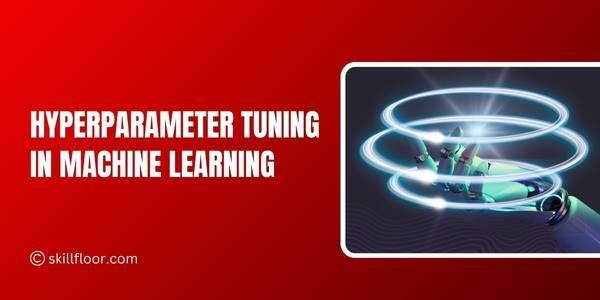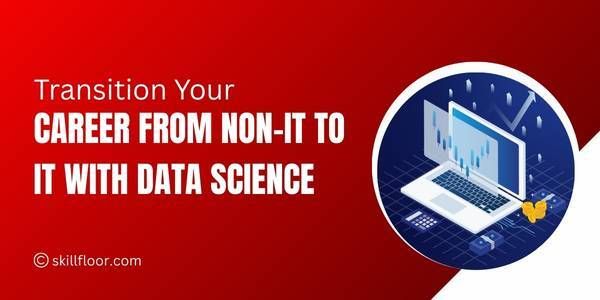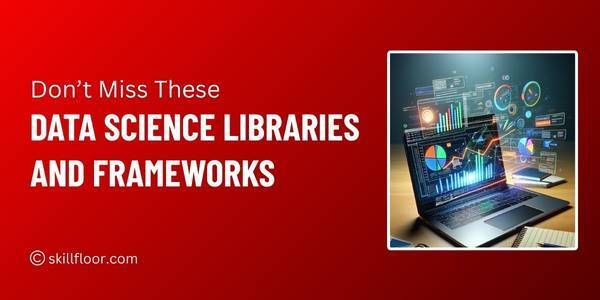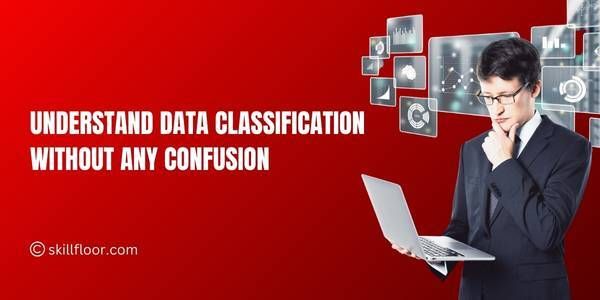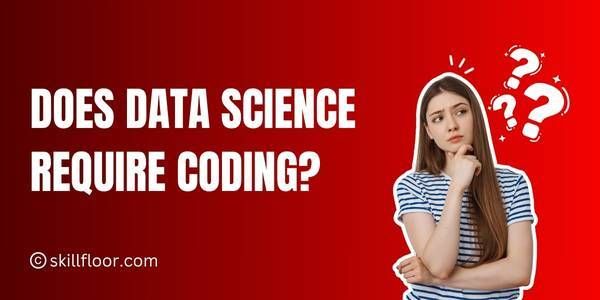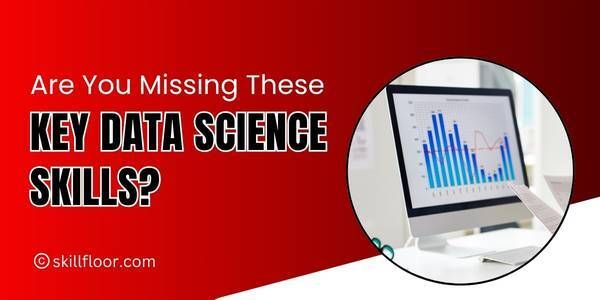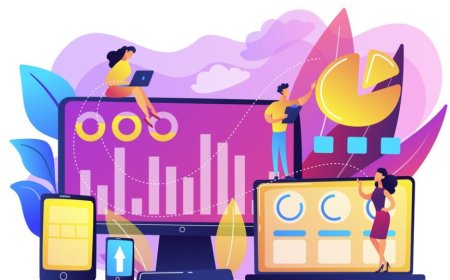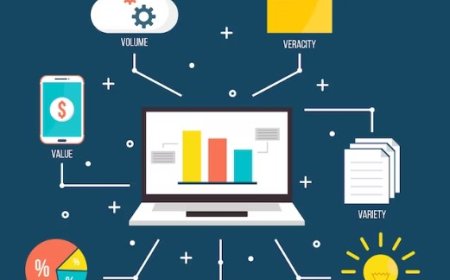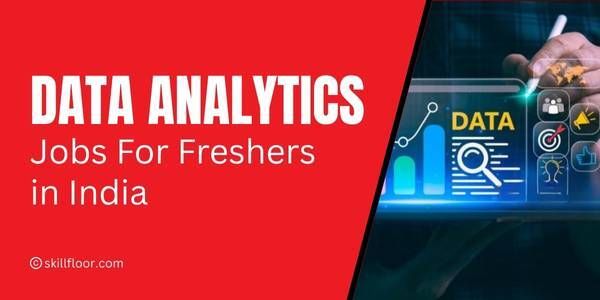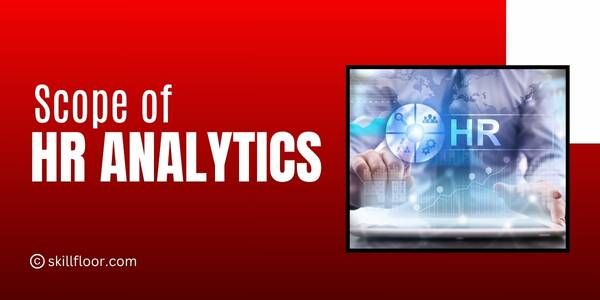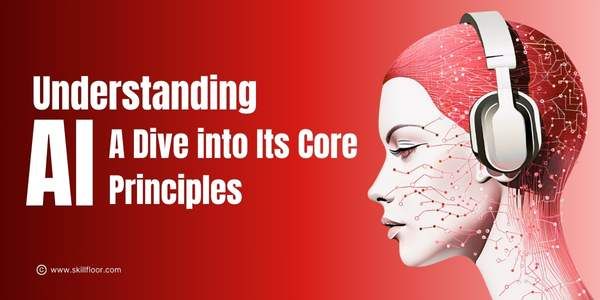Business Analyst vs Data Analyst
Compare roles, skills, and career paths of Business Analysts vs Data Analysts to understand which aligns best with your goals.

Do you want to know why a business isn't doing as well as it should? While a data analyst examines the data to identify patterns, a business analyst examines how procedures are carried out behind the scenes. Collectively, they offer clear insights and doable actions to steer your company in the correct place.
Many leading businesses now realize that greater outcomes come from keeping data work and business strategy separate. Organizations such as CII and NASSCOM claim that well-defined roles help in collaborative decision-making. In addition to being beneficial, using both business and data analysts is the wise and tested path to expansion.
Attempts by several teams to employ a single individual for both data and business duties frequently result in errors and delayed progress. Things alter when the proper positions are filled, namely a Data Analyst and a Business Analyst. Decisions get clearer, sales increase, and consumers stick around. Actual responsibilities produce actual outcomes.
What is a Business Analyst?
A business analyst assists an organization in identifying its needs and improving its methods of operation. They consult with groups, collect information, and examine ways to enhance procedures. They are responsible for ensuring that the firm operates efficiently and more readily achieves its vision.
They serve as an intermediary between decision-makers and teams. A business analyst helps in the proper planning of any project, whether it involves new software or a modification to existing procedures. They identify issues early, pose pertinent questions, and lead teams through straightforward procedures.
What Exactly Do Business Analysts Do?
-
Understand Business Needs: A business analyst hears what the company wants from various teams, managers, and customers. They keep everyone informed about what is required and concentrate on attainable objectives.
-
Gather and Organize Information: Important information is gathered through meetings, documentation, and notes. The data is then arranged simply so that teams may use it with ease and maintain focus on the important things.
-
Find Problems in Processes: Business analysts closely examine the way activities are completed. They identify areas that are sluggish, confusing, or time-consuming, and then they explain how to fix them.
-
Suggest Simple Solutions: Their ideas can solve issues without making things more difficult. Their recommendations are clear, useful, and effective for teams and supervisors looking to improve productivity.
-
Help with Project Planning: By creating detailed strategies, they help teams navigate through changes. Every stage, what to anticipate, and how to solve issues before they become serious are all explained by business analysts.
-
Connect People and Ideas: They ensure that all parties—clients, employees, and leaders—are aware of the strategy. With improved collaboration and well-defined objectives, business analysts facilitate collaboration, information sharing, and speedy issue solving.
Top Skills That Define a Successful Business Analyst
Technical Skills
-
Basic SQL: Helps in the extraction of valuable data from databases by business analysts. This ability is excellent for reviewing reports, identifying patterns, and supporting choices with actual data from business records.
-
Microsoft Excel: An essential tool for creating reports, categorizing data, and doing computations. It assists business analysts in managing daily financial data in an easy-to-understand manner.
-
Wireframing Tools: Business analysts may create basic screen designs with these tools. Before a new system or feature is created, it helps teams see how it may appear.
-
BPMN (Business Process Model and Notation): Used for graphic business process mapping. It's useful for outlining the process of completing tasks and identifying areas that may be made simpler or better.
-
CRM/ERP Tools: Analysts can better monitor consumer data and business processes by having a solid understanding of platforms like SAP and Salesforce. It's helpful for identifying problems and enhancing everyday tool usage.
-
Project Management Tools: Business analysts may better organize tasks, monitor progress, and maintain team alignment during a project with the use of tools like Jira, Trello, or Asana. Business analytics processes that facilitate more intelligent planning frequently include these technologies.
Soft Skills
-
Communication: Business analysts may interact with various teams, communicate updates, and explain concepts more effectively by using clear writing and speech to ensure that everyone is on the same page.
-
Negotiation: They frequently weigh opposing viewpoints. Finding solutions that satisfy company requirements without causing friction or misunderstanding amongst teams is made easier with effective negotiating.
-
Domain Knowledge: Understanding the workings of a particular sector enables business analysts to provide more insightful suggestions. It makes their recommendations more applicable, understandable, and useful in the actual world.
-
Critical Thinking: They must exercise critical thought, pose pertinent queries, and relate minor issues to more significant ones. This makes it easier and faster for them to identify superior ideas.
-
Teamwork: Close collaboration with others is essential. A business analyst fosters trust, encourages team members, and facilitates the advancement of common objectives.
-
Empathy: Knowing how team members or users feel has a significant impact. Analysts that possess empathy are better able to develop solutions that function in real life as well as on paper.
Tools Every Business Analyst Should Master
-
Microsoft Excel: Excel is excellent for managing data, creating charts, and keeping track of assignments. When working with various types of data, it keeps business analysts organized and is easy to use.
-
Microsoft Visio or Lucidchart: These tools help in the creation of understandable flowcharts and process maps. They are used by business analysts to illustrate how work is done and where improvements or speedups might be achieved.
-
Jira or Trello: Tasks and deadlines are organized with the help of these project tracking tools. They support business analysts in overseeing team development and ensuring that nothing crucial is overlooked.
-
SQL (Structured Query Language): SQL facilitates the direct extraction of valuable data from databases. It is used by business analysts to assist more intelligent business decisions, identify useful data, and provide answers to problems.
-
Wireframing Tools (like Balsamiq or Figma): Analysts may use these tools to create basic displays for applications or websites. Before a feature is finished, it helps everyone understand how it should appear
-
CRM/ERP Platforms (like Salesforce or SAP): Analysts can better monitor user requirements and corporate processes by becoming proficient with customer or resource tools. It helps teams use critical systems more effectively and encourages better planning.
What is a Data Analyst?
A data analyst is a person who examines data and statistics to identify meaningful trends. By transforming raw data into intelligible insights, they assist organizations in understanding what is and is not working. From customer service to marketing and sales, their work aids teams in making better decisions.
To analyze data, they frequently utilize Excel, charts, and basic software. A data analyst assists in providing answers to queries such as "Why are sales dropping?" or "What do consumers enjoy most?" Their discoveries offer businesses with a clever, simple method to enhance their services, goods, and outcomes.
What Exactly Do Data Analysts Do?
-
Collect Data: Data analysts collect information from a variety of sources, including surveys, sales reports, and websites. This enables individuals to comprehend corporate operations based on facts rather than conjecture.
-
Clean the Data: They clean up disorganized data, correct missing numbers, and eliminate mistakes. Clean data is crucial because it enables teams to provide reliable and useful outcomes.
-
Study Trends and Patterns: They examine the data to identify recurring trends, such as the best-selling product or periods of declining sales. This aids in the design of more intelligent corporate strategies.
-
Use Helpful Tools: Excel, SQL, and charts are some of the tools that data analysts use to better comprehend numbers. A lot of people learn this in an analytics course where they practice using data to solve actual problems.
-
Build Reports and Charts: They create simple reports and eye-catching graphics based on their research. Other teams may easily observe what is happening and what has to be done next thanks to this.
-
Support Business Decisions: Their observations help managers in making wiser decisions. The data helps teams make informed decisions about the best course of action, whether that be introducing a new product or enhancing an existing service.
Top Skills That Define a Successful Data Analyst
Technical Skills
-
SQL (Structured Query Language): Helps in extracting valuable information from big datasets for data analysts. It's an essential ability for working with real-time data and responding to business inquiries.
-
Python or R: These tools facilitate the creation of visualizations, deeper analysis, and simple model execution. They work wonders for resolving issues that spreadsheets can't handle.
-
Microsoft Excel: Still a favorite among many people! Quick calculations, table creation, and data organization in an easy-to-understand format are all made possible by Excel.

-
Tableau or Power BI: These tools transform data into vibrant dashboards and graphics. Without having to go through raw data, data analysts utilize them to assist teams in identifying and comprehending trends.
-
Statistics: Analysts can determine the true meaning of the data by having a basic understanding of statistics. This helps determine if a trend is a passing fad or something permanent.
-
Data Modeling: Data organization for reports and systems is helped by this ability. Data analytics and technologies that are well-understood facilitate efficient workflows and facilitate the management and comprehension of information.
Soft Skills
-
Attention to Detail: Small details that others overlook are picked up by a skilled data analyst. This increases the work's dependability and utility and aids in the early detection of errors.
-
Critical Thinking: They delve beyond the first response, ask insightful questions, and investigate issues further. Better and wiser solutions result from this.
-
Problem-Solving: By employing facts, they help teams identify problems, test theories, and resolve them. The company operates more effectively and smoothly as a result.
-
Communication: They make difficult mathematical concepts understandable to everyone. Teams and leaders may act more clearly as a result.
-
Time Management: They frequently manage several reports and due dates concurrently. Maintaining organization and effective time management keeps projects on schedule and work moving forward.
-
Team Collaboration: Working well with others is one of the most important skills for data analysts. They frequently participate in team talks in order to comprehend objectives and exchange ideas that result in superior choices.
Tools Every Data Analyst Should Master
-
Microsoft Excel: An essential tool for simple analysis, rapid chart creation, and data sorting. It is simple to use and ideal for activities involving modest to medium amounts of data.
-
SQL (Structured Query Language): Data analysts may extract information from big databases with the use of SQL. Every day, it is used to gather data, provide answers, and create reports that assist teams in making informed decisions.
-
Python or R: These are coding tools for analyzing big data sets. They provide extensive analysis, the creation of graphs, and the resolution of issues that Excel finds difficult to manage.
-
Tableau or Power BI: These technologies transform data into visually appealing dashboards and graphics. Without having to look at the raw figures, they make it easy for others to comprehend what the data is saying.
-
Google Sheets: Excellent for team data exchange and online collaboration. When you don't require comprehensive software, it's useful for live editing, rapid updates, and creating straightforward reports.
-
Jupyter Notebook: It allows analysts to create code, add comments, and view outcomes step-by-step; it is mostly used with Python. It's an excellent method for effectively communicating your work to others.
Business Analyst vs Data Analyst: Core Differences
|
Aspect |
Business Analyst |
Data Analyst |
|
Main Focus |
Improving business processes and meeting business needs |
Analyzing data to find patterns and insights |
|
Key Tasks |
Gathering requirements, analyzing workflows, suggesting changes |
Collecting, cleaning, and visualizing data, reporting |
|
Tools Used |
Excel, Visio, CRM/ERP systems, project tools |
SQL, Python/R, Excel, Power BI/Tableau |
|
Skills Needed |
Communication, problem-solving, domain knowledge, documentation |
Data analysis, attention to detail, critical thinking |
|
Output |
Process models, requirement documents, business cases |
Dashboards, data reports, charts |
|
Goal |
Make the business work better and smoother |
Help teams make better data-based decisions |
Educational Pathways and Certifications for Business Analysts and Data Analyst
Getting the right education and skills is crucial to beginning a career as a business analyst or data analyst. It is usual to have degrees in statistics, IT, or business. Places such as Skillfloor provide practical instruction and actual projects. Credentials like Google Data Analytics or CBAP assist open doors and boost confidence. These learning paths simplify, clarify, and center learning on real-job requirements.
Skillfloor Certifications for Aspiring Analysts
Certified Business Analytics Professional
Anyone who wants to better understand how businesses operate should get this qualification. Business problem-solving, tools, and process mapping are covered. Real projects and straightforward instruction provide students the skills they need to operate comfortably as business analysts and assist teams in making better, more informed decisions on a daily basis.
Certified Data Analysis Professional
The course teaches you how to deal with statistics, identify patterns, and create reports that are easy for others to understand. Excel, SQL, and charts will all be used in practice. You'll know how to transform unstructured data into valuable insights that inform astute business decisions and planning at the end.
Business Analyst vs. Data Analyst: Career Path
Business Analyst
|
Job Title |
Description |
Average Salary (INR/year) |
|
Junior Business Analyst |
Supports senior analysts with research, reports, and learning basic tools. |
₹3,00,000 – ₹5,00,000 |
|
Business Analyst |
Works with teams to gather needs and improve processes. |
₹5,00,000 – ₹8,00,000 |
|
Senior Business Analyst |
Handles complex projects, mentors juniors, and improves systems. |
₹8,00,000 – ₹12,00,000 |
|
Business Consultant |
Offers expert advice to improve operations and strategy. |
₹10,00,000 – ₹16,00,000 |
|
Product Manager |
Oversees product planning and ensures business and user needs are met. |
₹12,00,000 – ₹20,00,000 |
|
Business Analysis Manager |
Leads a team of analysts and handles overall business analysis strategy. |
₹15,00,000 – ₹25,00,000 |
Data Analyst
|
Job Title |
Description |
Average Salary (INR/year) |
|
Junior Data Analyst |
Helps collect and clean data, creates basic charts, and supports senior analysts. |
₹3,00,000 – ₹5,00,000 |
|
Data Analyst |
Analyzes data, builds reports, and shares insights with business teams. |
₹5,00,000 – ₹9,00,000 |
|
Senior Data Analyst |
Works on complex datasets, mentors juniors, and supports decision-making. |
₹9,00,000 – ₹13,00,000 |
|
Data Scientist |
Uses advanced tools and models to predict trends and solve deeper problems. |
₹10,00,000 – ₹18,00,000 |
|
Analytics Manager |
Leads data teams, manages dashboards, and supports business goals. |
₹15,00,000 – ₹25,00,000 |
|
Head of Data/Director |
Oversees data strategy across the company and ensures data drives growth. |
₹25,00,000 – ₹40,00,000+ |
Depending on what your company needs most, you can choose between a business analyst and a data analyst. A business analyst can help you if you want to make changes to the way things operate. A data analyst makes those insights come to life if you're looking to comprehend statistics and identify trends. However, the outcomes are more robust, intelligent, and long-lasting when both roles collaborate. Understanding the differences enables you to make smarter decisions while forming a team or planning a career. Any business can make progress more easily and clearly when the appropriate people are in the proper roles.





















